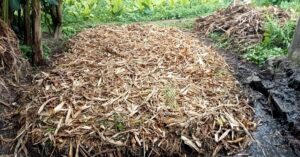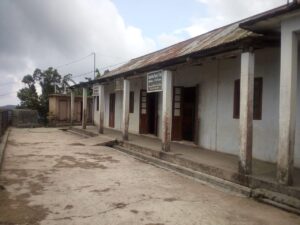By Bhogtoram Mawroh and Pius Ranee
The introduction of the Green Revolution (GR) in India during the 1960s was a momentous occasion in the history of the country. Facing the dual challenges of increasing population amid food shortages, the country decided to adapt the work done by Norman Borlaug (1970 Nobel Peace Prize recipient) and his associates in Mexico to bring a sea change to India’s agricultural landscape.
Farmers were encouraged to replace their traditional seeds with High yield varieties and adopt associated agricultural techniques. This strategy has allowed India to attain self-sufficiency particularly in terms of food grains. The increase in yield was so dramatic that on many occasions the existing infrastructure found it difficult to absorb the surplus production.
Farmers’ income especially those who were able to afford to adopt the package also saw an improvement. However, all of this has come at a cost that has become more apparent with time. The increase in yield has reached a plateau while the negative consequences of the GR have become more prominent.
In 1935 NI Vavilov, a Russian scientist listed regions which he believed were independent ‘centers of origin’ of cultivated food plants around the world. In these regions, there is a diversity of traditional varieties of a wide range of crops along with their wild relatives.
The Indian centre (which includes Meghalaya) is a very important centrewhere several kinds of vegetables are found. Around 100,000 varieties of rice were found till the 1970s in India. Indigenous areas, especially, are the hotbed of agrobiodiversity.
The North East Slow Food and Agrobiodiversity Society (NESFAS) undertook a participatory mapping exercise on agrobiodiversity in 32 villages (which include 28 villages from Meghalaya and four villages from Nagaland) and found that there is an average of 202 food plants in a single community. This includes both wild and cultivated varieties.
Generations of careful selection, breeding by farmers made possible this astounding richness in agrobiodiversity. This diversity was in turn supported by the practice of agroecological practices in terms of crop management, which includes soil, water, and pest management. After agriculture was discovered 10,000 years ago (8,000 BCE), it was found that humanity used this knowledge to build civilisations. But since the advent of industrial farming and GR, all this knowledge, which had ensured human survival, was now considered to be backward and primitive.
Instead of it, modern varieties developed under laboratory conditions using methods of modern science together with by-products of petroleum (chemical fertilizers and pesticides) are touted as the panacea for the ills facing agriculture. Farmers who refuse to be swayed by this propaganda are labeled as close-minded and blamed for keeping agriculture backward. Their knowledge, which was the outcome of thousands of years of experience, is branded as primitive. Indigenous communities, living at the margins, have always been a target of negative connotations.
However, after the environmental pollution, there is an increasing skepticism of the methods of modern science. Consequently, there is an increasing acknowledgment of indigenous traditional knowledge, which has developed and nurtured the rich agrobiodiversity found in different regions of the world including Meghalaya and Nagaland.
According to the UNESCO indigenous knowledge, “…refers to the understandings, skills, and philosophies developed by societies with long histories of interaction with their natural surroundings” and it offers innovative solutions to climate change (of which the fossil fuel-driven GR revolution is a major contributor). NESFAS also concurs with this assessment and wants to strengthen the indigenous food system by exploring the agroecological basis of their farming practices. To achieve this end, Agroecology Learning Circles (ALC) were formed as an important vehicle. The aim of these ALCs is to bring respect and recognition to indigenous knowledge especially concerning agroecological practises that have sustained indigenous food systems for generations.
ALCs combine agroecology with participatory research and aims to empower indigenous communities to recognize, revive, practice, and eventually further develop traditional agroecology technologies and practice and stimulates local innovation for sustainable local food systems. It is farmer-led and its ‘laboratory’ is the field following the lines of the Farmer Field Schools. It is also a creative and collective space where community members and scientists meet to share and learn from each other about new skills and capacities along with new tools and processes to enhance local agroecology practices, food sovereignty and social transformation through local food initiatives.
NESFAS along with its partners, Society for Urban and Rural Empowerment (SURE), Social Service Centre (SSC) and North East Network (NEN), have established ALCs in a few of their project villages. Local farmers from their respective villages are members of these ALCs. Initially, a meeting with ALC members was held where members are asked asked to reflect on the important factors that affect crop production during the session. During the session, solutions are also solicited from members who come up with different methods of overcoming the problem, pest infestation, soil fertility, etc. A decision is then made on the choice of the experiments to be conducted and members assigned for particular experiments.
On October 17, 2019, NESFAS with the support of Living Farms, Odisha, organised a one-day workshop — Sharing Results of Best Agroecological Practises — at the KJP Conference Hall where Thomas Iangjuh, Junior Scientist at Bio Resource Development Centre, Shillong, attended the programme.
During the workshop, three ALCs were invited to present the result of their experiments. These were from Bhoirymbong (Khweng, Liarsluid and Khliehumstem) (RiBhoi), Umsawwar and Mawhiang (East Khasi Hills).
The experiment that was conducted byBhoirymbong ALC was on pest management wherein ALC members identified cut worm/Niangkhung (Agrotisipsilon) and Corm borer/Niagriej (Haplosonyxchalybaeus) as the pests to focus during this cycle. These particular pests affect potato and taro respectively. To reduce their infestation, four methods were devised by the members, viz., fill the stem centre of the Taro with rice hull; fill the stem centre of the Taro with powered maize; fill the stem centre of the Taro with crushed rice (khawpyrsit); and fill the stem centre of the Taro with soil. The experiments were performed from May to June 2019 with the harvesting of taro and potato crop from the experimental plots. A reduced infestation of cut worm/Niangkhung (Agrotisipsilon) and Corm borer/Niagriej (Haplosonyxchalybaeus) was noticed by the members. The members who conducted the experiments were Wosly Muktieh, RidianS yiem and Triol Jalong.
The Mawhiang ALC carried a similar experiment on pest management as well. The members who took part in the experiment included Radalin Kharraswai and Iorial Nongsiej. Here the members focused on cut worm/Niangkhung (Agrotisipsilon) and ret ants (Solenopsis) on taro and potato crops. Two experiments were conducted viz., lime was spread around potato seed during the planting season to prevent infestation of red ants (Solenopsis); to thwart cut worm/Niangkhung (Agrotisipsilon) marigold was planted alongside taro. These experiments began from March to June 2019 when both the crops were harvested. The decline in infestation was noticed in both cases. Reduction in crop losses in both Bhoirymbong cluster and Mawhiang subsequently resulted in a greater harvest of taro and potato crop.
The UmsawwarALC group, on the other hand, chose to focus on soil improvement as the experiment. ALC member TronilaLynshiang shared with the others her method of making compost. The members who took part in the experiment are TheirisaNongrum,SaphinaSuting, EarnestinaMynsong, SitamaryNongrum, ShidalinNongrum, and LedranSuting.
TronilaLynshiang demonstrated composting, which included diggingof two pits, one for preparing the compost and the other for storing compost.The next steps includespreading the cut grass on the floor of the pig shed. Leave it there for a few days(some times, cow dung is added). Remove the grass from the shed and place it inside the pit. Pig dung and ash from the fireplace is added every morning. Cut grass, fallen leaves, garden weeds, dry stems of pea plants and leaves of medicinal plant are added to the pit whenever available. Compost is readywhen it is soft. The finished product is transferred to the storage pit and finally before harvest, the compost is slightly mixed and turned.
The results of the experiments were mixed, with improvement in soil fertility for one ALC member but there was no change for the others. A reason for this could be the fact that the latter did not increase the amount of input for making the compost. For the members who did increase the amount of compost improved soil fertility and production of potato was noticed.
Future experiments are being planned in the three ALC as well as other ALCs, for example the MawlumMawjaksew ALC (Mawthadrashian Block, West Khasi Hills) is going to start experiment on May beetle/Niangbyrnai (Phyllophaga). In this experiment fresh leaves of lantan/sohpangkhlieh (Lantana camara) are cut and buried into the soil while planting the particular crop. The experiment began in September 2019.
Currently, NESFAS and its partners in their respective villages are monitoring all these experiments.
The Umsawwar ALC already has plans to share the result of the experiment with the local community. The world at large is suffering from the ill effects of a farming system, which is based on imposing an order, which threatens the sustainability of the ecological balance of the planet itself. Revival and adoption of the traditional knowledge, regarding agroecological practises of indigenous communities such as those from Meghalaya and Nagaland, is one of the ways to negate that gloomy prospect. Only when that happens will a truly sustainable food system can be built. Through ALC, NESFAS, SURE, SSC and NEN are trying to do just that.
About the writers




Pingback: Community Seed Banks And Community Seed Fairs: Reaffirming Seed SovereigntyNorth East Slow Food & Agrobiodiversity Society